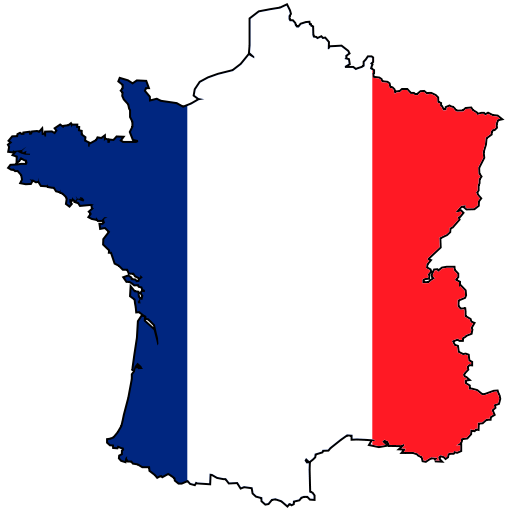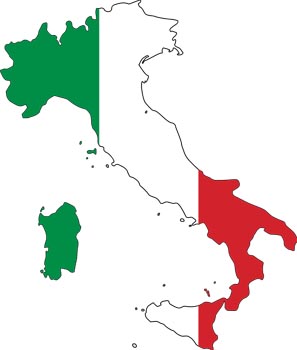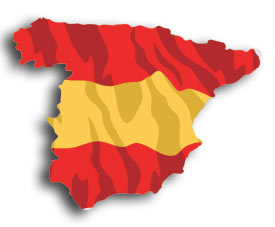IN THE RADICAL PRESS / MEMOIRE DES LUTTES
By Frederic Lebaron
Illustrating the difficulty, if not impossibility of making predictions in the social sciences, the current events in Ukraine give the impression that history moves a little too fast for observers. The most surprising turnarounds can quickly render obsolete peremptory analyses, and reliable information one day threatens to become pure illusion or manipulation the next.
This is what many Western commentators have experienced. Many of them were ecstatic about Ukraine’s newfound freedom, free, as if by magic, from corruption and the remnants of totalitarianism by the forced departure of President Yanukovych, elected in 2010. And this, just as, in obscure circumstances, we saw installed a shock government of technocrats and ultra- nationalists whose ideology derives from Nazism . [1]
Far from bringing peace, the founding value of Europe, the arrival of this new revolutionary power contributed a few days to increase tensions in a country objectively divided [2]. It even seemed to favour the entry into a new logic of Cold War with Russia, which took advantage of the situation on behalf of the defence of the Russian-speaking population, especially in Crimea . [3]
The new government of Kiev, ideologically novel, ranges from the moderate leaders’s technocratic neoliberalsim to post-Nazi ministers from Svoboda [4], passing by the pragmatism of the oligarchs . [5] It quickly announced the implementation of the same sacrifices as those inflicted today on the Greek people. [6] As the new prime minister, central banker Arseniy Yatsenyuk, said, “unemployment is growing at a galloping pace, as well as the flight of investment. We have no alternative but to take unpopular measures, including cuts in social programs and subsidies, and reduction in expenditure “[7] .
Here is a popular revolution that heralds, unmasked, a tomorrow of disillusionment. The IMF had, besides, welcomed meeting with officials who were so well disposed. As for the European Union (EU), suddenly generous, it now promises Ukraine 11 billion euros in two years, that comes with the signing of the association agreement that was the origin of the popular revolt in December. [8]
A comparison with the austerity policies in the EU ignores that the point of departure is much more difficult in Ukraine than they were in Greece: the real per capita GDP (at current exchange rates ) of ($3,861.7 dollars in 2013, is more than four times lower than that of Russia ($14, 973.5) and five times lower than that of Greece ($21, 617.4 dollars) [9]. The trade deficit is abysmal and the currency has collapsed, so the central bank had to limit cash withdrawals.
The ongoing political crisis further increases uncertainty about the future of the economy and society. It is in a devastated country after 22 years of democratic post-Soviet transition [10], that is now playing out a new and dramatic stage in the global wave of social destabilization after the Great Recession of 2009 [11]. This new stage has several unexpected features.
The first is similar to what Michel Dobry, political sociologist, has called “regression to the habitus” in a classic work on political crises [12]: in any context of crisis, “primary” reflexes long inculcated through socialization, resurface. They then determine the discourse and perceptions of the actors faced with a reality they allow themselves to believe master. The most visible today, and probably the most surprising in its intensity, is the rapid return to the public space of representations of combat ? inherited from the Cold War. [13]
In Europe and the United States, they oppose the democratic, free and modern West, with its two leading representatives, the United States and the EU, to a despotic, totalitarian and corrupt East, illustrated by Russia (and of course, in the background, China). Reactivated in the Ukrainian context by many actors and commentators, the system of mythical ideological opposition thus mobilized help to conceal the social and political issues behind a large geopolitical Hollywood fresco. This story mobilizes actors on the ground, and perhaps especially beyond, giving them a sense of participation, at a distance, in a new page of history. [14]
While the media and information systems continue to be closely linked to national and state strategies, and have disseminated in a more or less conscious fashion, state propaganda, especially when there is a clear ideological content (which is no longer the case today). The Cold War has exacerbated this tendency to ideological mass mobilization on both sides of the “iron curtain” . [15]
The Ukrainian situation, situated at the intersection – the hotspot – in the European and Russian world space, is particularly conducive to a sudden return of this repressed history. In the dominant narrative in Europe, Russia has returned to the USSR and the countries on its western flank are threatened with “switching” to its sphere of imperial domination. In contrast, all Western advances are seen by many Russians as a threat directly driven by aggression and the sprawling NATO presence.
The second new element – and relatively new – is the configuration of forces underlying the process of political change in Ukraine. Indeed, the current change, at least in Kiev and western Ukraine, is based on several intertwined social dynamics: a grassroots movement rooted in the groups made precarious by the economic crisis and various sections of the middle classes; the rapid rise, in a troubled parliamentary game, of neoliberal reformers supported by the United States and the European Union; the strategies of the oligarchs, guarantors of stability, including in the East; the parallel rise of radical right-wing activists who seek to anchor the changes into nationalism, and encourage anti-Russian and anti-Soviet reflexes.
This unique combination allows every imaginable projection.
European democrats can recognise themselves in an idealised vision of the EU, the liberals, which scarcely mobilises crowds in Paris, London or Berlin, and so graft onto “EuroMaïdan” and the government resulting there from, the universal values of democracy, solidarity and tolerance they spontaneously associate with it.
In contrast, the obvious presence of extreme right-wing movements in the movement, in the very heart of the new government, becomes invisible and insignificant in their eyes. [16] It is rather ubiquitous for Russian observers and for all those who are a little less sensitive to the aura of the starry blue flag. Both fail to see that the new administration is actually in continuity with the governments of the period of post-Soviet transition: by a clearly neoliberal economic ideology, championed by technocrats and big money – the oligarchs – who seek above all to maintain their profits and their networks of corruption, even at the cost of a yet more intense social crisis, and increasingly tangible threats of partition.
This typical post- Soviet conjunction shouldn’t surprise experts of the political configurations since the 1990s in the countries of Central and Eastern Europe. [17] But the novelty of the process, related to the 2008 crisis and its aftermath, is that the European hope of an image of an American superpower that increasingly uncertain, fragile and declining for structural reasons. The crisis in Europe is synonymous with austerity, a sick democracy, dominated by finance, and represented by the economic “experts” that are promoting, as a project for society, structural ajustment plans and the roll back of social gains, even in countries where they were notoriously insufficient.
Therefore, we can venture to invert the idea, heard a thousand times, that the European Union is the future of Ukraine, and ask whether Ukraine is not, in contrast, the new laboratory of future political and social upheavals in Europe.
NOTES
[1] The new government has at least four notorious members of Svoboda, the former “social-national” party of Ukraine, now of post-Nazi politics: Oleksandr Maksymovych Sych, deputy prime minister, Ihor Yosypovych Tenyukh, Minister of Defence; Ihor Oleksandrovych Shvaika, agriculture minister; Andriy Mokhnyk, mnister of ecology and natural resources. As for the ultra-nationalist leader of the Right Sector, Dmytro Yarosh, having been announced in Kiev’s Maidan Square as one of the new Cabinet (subject to agreement), he finally disappeared from the cast members of the government.
See: http://en.wikipedia.org/wiki/Yatsenyuk_Government
[2] Catherine Samary, « Ukraine : ni troupes russes ni fascism ni institutions euro-atlantiques », Mémoire des luttes, 5 mars 2014.
[3] In the rapidly evolving situation, the only obvious conclusion to date is that all geopolitical tensions increased sharply since the end of February.
[4] See Emmanuel Dreyfus, « En Ukraine, les ultras du nationalisme », Le Monde diplomatique, mars 2014.
[5] Besides the technocrats and post-Nazis, the government includes several oligarchs and some representatives of the EuroMaidan popular movement.
[6] Faced with the new government’s demands for huge amounts of aid, amounting to $ 35 billion in two years, the IMF’s enthusiasm has cooled, and is now evoking smaller amounts, after asserting the conditions of its intervention, using its classic argument based on the need for “structural reforms” and good “governance.” For an illustration of the reluctance of economists to support an significant aid package to Ukraine, a notoriously corrupt country see Charles Wyplosz, « FMI-Union européenne : qui va payer pour l’Ukraine ?, Le Figaro, 28/02/2014.
[7] Yves Bourdillon, « Arseni Iatsenioul avertit les Ukraniens de sacrifices inévitables », Les Echos, February 28, 2014. The first measures that were announced greatly reduce spending on public administration and anticipate a drastic austerity plan: increased prices that had been kept low for a population on very low incomes, the reduction of pensions and wages of civil servants, labour market liberalization etc
[8] Voir : http://www.lepoint.fr/ukraine-abracadabra-l-ue-debloque-11-milliards-d-euros
[9] Bilan du Monde, édition 2014, page 113. At parity of purchasing power, the differences are lower because Ukraine is characterized by very low prices.
[10] The evolution of the human development index (HDI) of Ukraine is eloquent: http://hdr.undp.org/en/countries/profiles/UKR. After the fall of 1990 and a rebound in the first half of the 2000s, the HDI has stagnated at an intermediate level (0.74, 78th in the world), but with a very low GDP per capita.
[11] On the increasing number of “riots” as can be measured using the Internet, cf. Alain Bertho, « L’augmentation des émeutes : un phénomène mondial », Basta !, septembre 2011.
[12] Michel Dobry, Sociologie des crises politiques. La dynamique des mobilisations multisectorielles, Presses de la FNSP, 3ème édition, Paris, 2009.
[13] Zhong Shen, in People’s Daily, on February 27, 2014, evokes, “chains of the Cold War mentality” in an article on the situation in Ukraine. According to him, “the theories related to political, economic and security during the Cold War still influence many people’s conception of the world. And some people in the West are still resentful towards Russia. See www.latribune.fr/ukraine-se-debarrasser-des-chaines-de-la-mentalite-guerre-froide-reduira-les-confrontations-inutiles-chine
[14] Note, however, that very few intellectuals are involved in the promotion of this new narrative.
[15] Here we find the analysis of Norbert Elias on competition between states in La Dynamique de l’Occident, Calmann-Lévy, Paris, 1975.
[16] This work of denial is particularly evident in some American commentators, such as Timothy Snyder: http://www.nybooks.com/blogs/nyrblog/2014/mar/01/ukraine-haze-propaganda/. As during the Cold War, the propaganda arguments are characterized by phenomena of symmetrical blindness.
[17] On the social consequences of the post-Soviet transition, read Sanjay Basu et David Stuckler, The Body Economic. Why Austerity Kills, Basic Books, New-York, 2013.
Translation by Revolting Europe





Discussion
No comments yet.